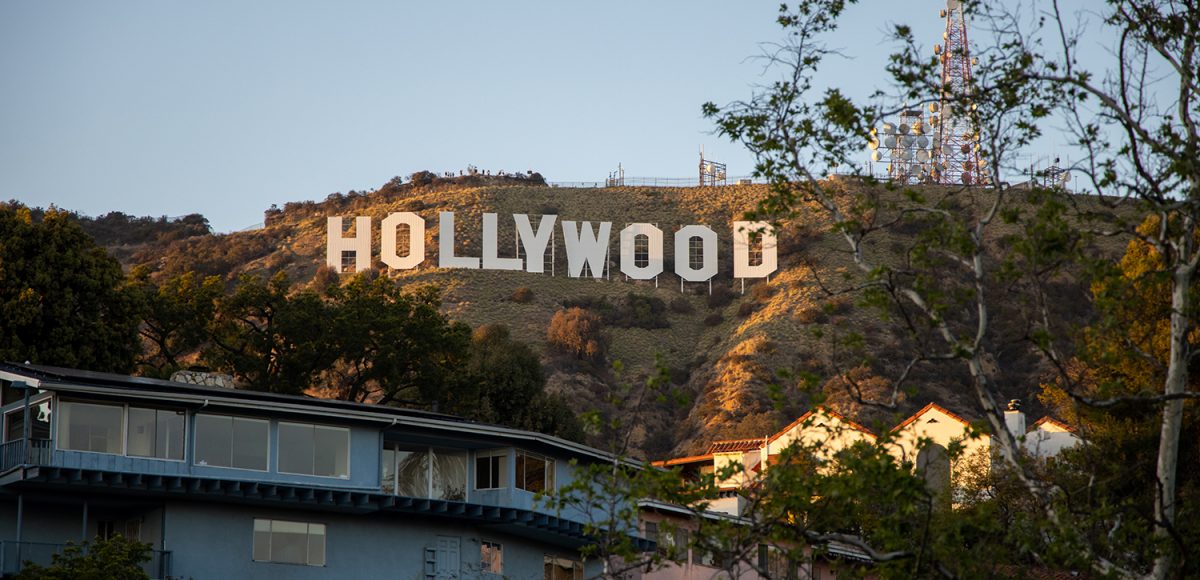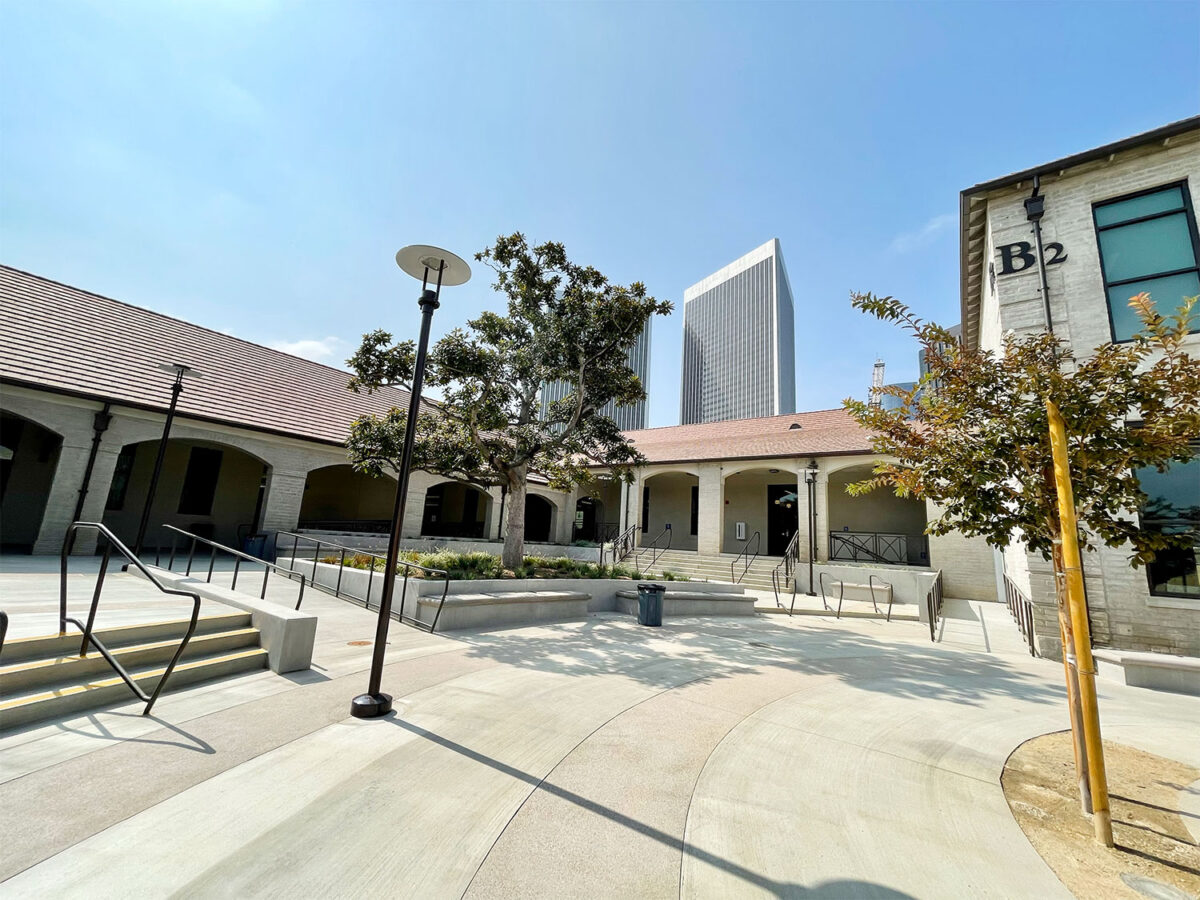Residents of Los Angeles’ hills have raised questions about a proposed Ridgeline Protection Ordinance that would institute new development and building regulations in order to better preserve the city’s ridgelines.
“Los Angeles has the rare distinction of being a city bisected by a mountain range,” City Planning Associate Patrick Whalen said at a Nov. 20, 2020 community workshop presentation. “The ridgelines of these mountains provide dramatic and unique natural backdrops to the city and are among the factors that established Los Angeles’ sense of place. In addition to the scenic and aesthetic benefits of ridge lines, they are also important ecological resources in the city, often serving as corridors for wildlife.”
The ordinance, proposed by Los Angeles City Councilmember Paul Koretz, would create a new Ridgeline Protection (RP) District that would apply to areas within 50 feet of the crest of a hill. The idea for the ordinance was first proposed in 2016, with the Los Angeles City Council instructing the Department of City Planning to draft an ordinance in 2019. City Planning released a draft in May. Similar laws exist already in Calabasas, Grass Valley, and unincorporated Los Angeles County.
“To facilitate the protection of these natural ecological, topographic, and aesthetic resources, the City has developed a method to identify ridgelines that may merit additional protection by evaluating their height, slope, topographic features, and potential for wildlife connectivity,” the proposed ordinance reads.
As it is drafted now, the ordinance would roll out in a pilot area defined by the 405 Freeway on the west, Laurel Canyon on the east, the Mulholland corridor on the north and Sunset Boulevard on the south. Beverly Hills would not be impacted. The pilot area would cover about 4,500 parcels.
The proposed ordinance would establish two tiers of ridgeline protection: RP1 and RP2. The former, more restrictive designation is meant to protect the physical integrity of a ridgeline by limiting the location and height of developments built along it. Structures must be set back from the lowest level of nearby ridgeline by 50 feet and must be 50 feet below the lowest point of the ridgeline. Additionally, RP1 prohibits grading within 50 feet of the ridgeline.
According to Whalen, this designation would apply mostly to undeveloped areas. “Given the level of development that has already occurred in many of the hillside areas of the city, it is anticipated that RP1 will be fairly sparingly applied and will be most useful for targeted application for pristine ridge line segments that are threatened by development,” he said.
The second designation, RP2, is meant to protect the visual integrity of ridgelines, preventing obstruction by new developments by setting height limits. Under this protection level, structures may not exceed 18 feet above the lowest point of the surrounding ridgeline, essentially limiting developments to one story.
Confusingly, though, a map of the pilot area released by the Planning Department seems to categorize all 4,500 parcels as RP1 with no inclusion of RP2. In a July 31 letter from the Doheny Sunset Plaza Neighborhood Association, which represents 2,000 households north of Sunset in the 90069-zip code, the association expressed their strong frustration at the scope of the RP1 designation.
“While there may be a few ‘remaining ridgelines,’ nearly all of these areas are urbanized, the parcels are developed and the areas for the most part could hardly be construed to be on a ridgeline with remaining value as a scenic or ecological resource,” association president Ellen Evans wrote to the Planning Department. The letter expressed support for “preserving natural ridgelines,” but said the sweeping RP1 classification burdened homeowners “with significant and needless market uncertainty and resulting property value damage related to their homes.”
Even the RP2 designation has its detractors. Shawn Bayless, executive director of the Bel Air Association, explained to the Courier that he does not see a reason to limit the height limit on ridgelines that have already been developed. “Folks want to look at ridgelines that haven’t been developed: great, let’s talk about it. But otherwise, it’s just a penalty to existing homeowners,” he said.
He gave as an example Somera Road, one of Bel Air’s many branching tributaries that run along the crest of the hills. The ridge in Somera’s case has already been graded and paved over, Bayless points out. “What’s the virtue of an 18-foot height limit on a street that already has homes on it? All you’re doing is penalizing the folks that haven’t put a second story on.”
Bayless, a former Director of Planning and Legislation for City Council District 5, warned that the height limit could have unintended consequences, forcing homeowners to expand down the hillside. “If you plug a hole in one area, it just puts more pressure on another,” he said.
Residents have also raised concerns about the impact on existing houses that would not be in compliance with the ordinance. For the thousands of structures already built along and on the applicable ridgelines, the proposed ordinance ensures that they “may be maintained, repaired or structurally altered provided the building conformed to the requirements of the zone and any other land use regulations at the time it was built or established.”
Even so, the proposal has many residents spooked, including Alison MacCracken. “If our house burns down, or if an earthquake makes it perish, or if we just want to tear it down to rebuild it, because the majority of the homes in the hills are actually quite old, you wouldn’t be able to rebuild it,” MacCracken told the Courier. “Say goodbye to rebuilding, financing, resale value, reverse mortgages, et cetera.”
Benjamin Resnick, a land use attorney whose firm of Jeffer, Mangels, Butler and Mitchell represents homeowners in the pilot area, elaborated on these concerns in a public hearing held by the Department of City Planning on June 17.
“The truth of the matter is, if you’re applying the city’s nonconforming laws and if there’s another wildfire and buildings are destroyed to more than 50% of the value of the house or replacement of the structure, you don’t get a right to rebuild it under your legal nonconforming status,” Resnick said.
After the hearing, Koretz announced the formation of an advisory committee of hillside design professionals to help revise the draft ordinance.
MacCracken, a realtor, and her husband, a real estate attorney, mobilized their neighbors to voice their opposition to the proposal, printing letters and taking them door to door throughout the pilot area. She even spent her Fourth of July canvassing. The result: Hillside Neighborhoods United (HNU).
“We are for protecting pristine ridgelines and the wildlife but making us build or rebuild our homes down a hill would require many more caissons, retaining walls, harm more pristine environment, and cause the animals even more harm,” MacCracken says of the group. “There are enough regulations in place to prevent more of the huge mansions we have seen built in the past decade. We do not need more housing regulations.”
Koretz, who introduced the motion calling for the ordinance, pushed back against MacCracken and her group’s characterization of the ordinance, describing it to the Courier as “misinformation.”
“Fact number one, these ordinances are not intended to impact existing buildings. These wildlife and ridgeline protections will apply to new developments,” Koretz said.
Though he did not address what would happen to structures in the case of fire or other disaster, Koretz stressed that the proposed ordinance still has a long way to go before it has a chance to become law. “Number two, these are draft ordinances that the Planning Department has released for public comments. This is the process by which we find and address any specific problems.”
The Planning Department announced in a June 30 newsletter that it will finalize the ordinance in the coming months and expects that the ordinance will make it to the Planning Commission in the winter of 2021.







